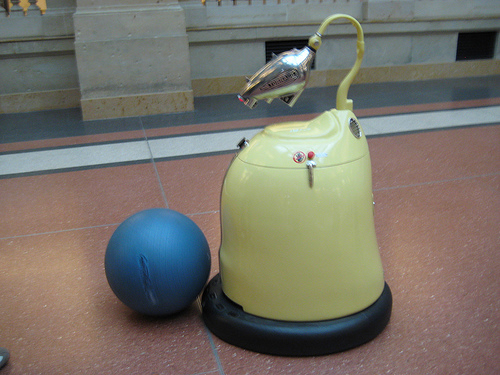What do you want your PLE to be able to do?
I am working on a couple of new papers on Personal Learning Environments. And getting asked by developers what we want them to produce as a PLE. Nota n easy question – in fact I am not sure it is the right question! But here are a few things I think I want my PLE to be able to do.
Access / search
One of the major things we use computers for learning for is accessing and searching information and knowledge. Whilst Google has greatly improved searching it is far form perfect. We need to be able to search inside documents in a way we cannot at the moment. And of course we need to be able to access and search our own computers and possibly those of our peer network. We need to be able to search inside audio and video, which is as yet problematic. And perhaps most importantly we need to be able to find people. Accessing and searching poses many challenges for developers. At present at a relatively simple level of educational repositories we are uncertain as to whether federated search or harvesting offers the best approach.
Aggregate and scaffold
A second use of a Personal Learning Environment could be for aggregating the outcomes of our activity – be it searches for documents, or other media, be it people or be it our own work. Aggregation is more than simply producing a database or of ‘learning objects’. Aggregation should allow us to bring information and knowledge together in a meaningful way. At the same time such a process of aggregation should assist us in scaffolding our knowledge, both in terms of growing on existing knowledge but also in terms of compromising what we know to accommodate the new.
Manipulate
Another possible use of a Personal Learning Environment is to manipulate or rearrange knowledge artefacts. This could be at the simple level of editing text or adding a note or tag. However with the use of different forms of media it may involve more extensive repurposing of such objects. Such repurposing may be for use within a personal knowledge base or may be for (re) publishing or sharing with others.
Another reason for manipulating media artefacts may be to render them usable within different environments and contexts.
Analyse
A PLE should be a place to analyse knowledge. This might involve the use of different tools. Alternatively, or additionally, it might involve the functionality to render information, knowledge and data in forms to allow analysis. It might also include the functionality to share and collaborate in analyses and to compare the results of such analysis with the research of others.
Store
A simple and obvious function for a PLE is to store data and artefacts. However, that storage function may not be so easy as at first thought with an increasing use of different storage media including external drives and web storage. Whilst some data and artefacts may be stored in a personal repository it may be that others will be stored within shared areas.
Reflect
Reflection is a central activity in developing learning. Reflection is particularly critical in an information rich (or information overload) environment. Reflection involves questioning, challenging and seeking clarification and forming and defending opinions and supporting or challenging the opinions of others. A PLE could provide (micro) tools for supporting these processes.
Present
We all have a need to present our ideas, learning and knowledge in different ways and for different purposes. It may be that we merely wish to present some work in progress for feedback from others. We may also wish to present parts of our work for a seminar or for a job application. A PLE could offer the functionality to select and summarise ideas and learning and develop a presentation in different formats according to need. Some forms of presentation may be unique instances – for example a presentation at a conference, others may be more recursive e.g a C.V. Tool also need to take into account that presentation may involve different media.
Represent
The representation of learning and knowledge within a PLE may be seen as a more complex functionality of presentation. Whilst a presentation will draw directly on artefacts within the PLE, a representation will attempt to show the underpinning knowledge structures of such artefacts. A PLE could include tools for visualisation and tools which allow the structures of the knowledge to be shown in a dynamic way. They might also allow the dynamic re-rendering of such structures either through the interrelationship of the artefacts and the underpinning knowledge structures. The representation of knowledge might be an individual activity but might also form part of a wider community activity
Share
That a personal Learning Environment should support individuals in sharing their learning and knowledge almost goes without saying. However, what is shared, when and with whom is far more complex. Tools could be developed, for example, which allow sharing to be the property of any particular artefact. A PLE might also include tools to facilitate collaborative work and collaborative work flows.
Network and people
Networks lie at the heart of a Personal Learning Environment. A PLE might be defined at a personal or individual node in a networked collaborative learning environment. It must be emphasised that a PE is not a document management system (although of course documents may be part of a PLE). PLE tools might allow social representation of networks and networking interchange. Such tools might also allow social association between people, knowledge and artefacts.

